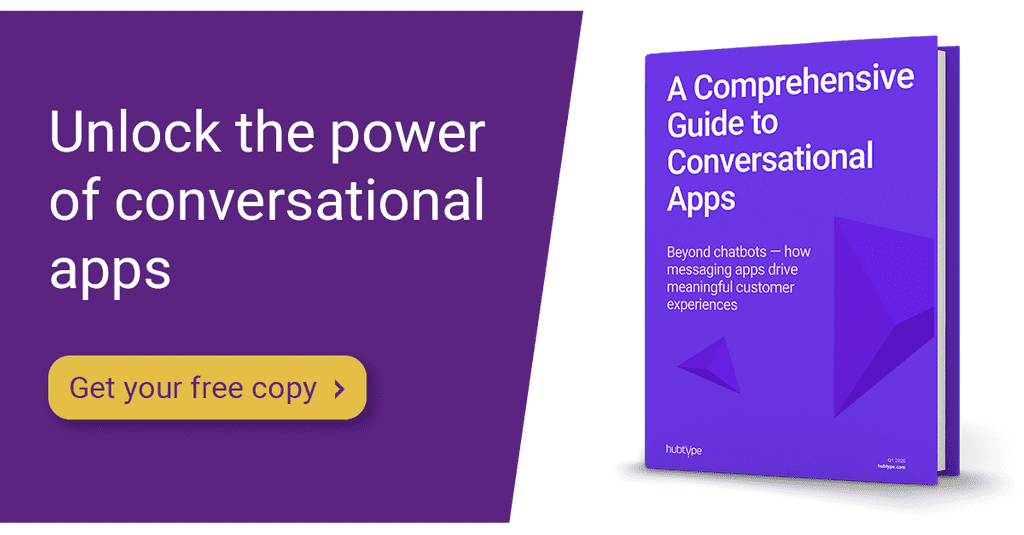Conversational Interfaces are helping brands connect with people in a simple and intuitive way. Conversational UI is an increasingly popular tool in customer service, mainly because it’s helping companies enhance their user experience and drive revenue.
What exactly is a conversational interface?
A conversational interface is any UI that mimics chatting with a real human. There are two main types. There are voice assistants that you talk to – like Amazon Echo, Siri, and Google Home. Then there are chatbots, which you type to.
Chatbots, in particular, are experiencing massive growth right now. For businesses that offer live chat on their websites, chatbots are a natural next step. In part, because they are relatively easy to adopt and integrate, they’re taking the internet by storm.
Conversational apps are the future of the internet
The experiences that can be achieved through conversational apps are the reason that they are the future. They’re simple, intuitive, and happening where customers are – in the apps they use on a daily basis. Now, businesses are delivering even more value through the use of media-rich chat extensions.
Chat Extensions help bots bring interactive features directly into the conversation. Let’s look at some use cases shared by Facebook.
- Expression: Create stickers or memes right inside Messenger. Share songs, videos, or other content.
- Media: Send stories on topics you follow to the group as they happen.
- Commerce: Group ordering and planning
- Productivity: Send updates from task trackers, collaboratively edit a document.
- Entertainment: Create games or group challenges.
Which companies are doing Conversational UI Right?
With chatbots on the rise, the question is how to outshine the competition. While some companies just diving in, others are ahead of the game. Let’s look at 5 examples that are setting the bar for conversational interfaces.
Sephora
Sephora is one of the leading companies in beauty retail, and their chatbot is no exception. With a head start in 2016, they implemented two chatbots that have revolutionized their customer’s shopping experience.
The Sephora Reservation Assistant, available on Facebook Messenger, makes it easy to book a makeover appointment. Their second bot, Color Match, wants to help customers find their perfect lipstick shade. It can take any photo of lips and find a similar shade available for purchase at Sephora. The Color Match bot is also on Messenger, so they’re both able to help when customers are on-the-go.
Starbucks
Starbucks has also joined the conversation with their chatbot that makes ordering coffee a breeze. Through their conversational interface, customers can place their order from anywhere and pick it up when it’s convenient for them. The friendly chatbot lets customers know when it’s ready and even help them pay and tip the barista.
Expedia
With Chatbots revolutionizing tourism and transportation, it’s no wonder Expedia wants in. Expedia’s chatbot facilitates booking a hotel anywhere in the world.
The Expedia bot runs on Messenger, making it desktop and mobile-friendly and very easy to use. All you have to do is type the city, departure and arrival dates, and the bot displays the available options.
CNN
The CNN chatbot delivers personalized news through Facebook Messenger. Finding and initiating a conversation with CNN is easy, and the chatbot asks questions to deliver a personalized experience.
The chatbot takes requests. You can type anything from “cats” to “politics”, and relevant news appears instantly.
Maroon 5
For a surprising addition to the list, Maroon 5 is using a chatbot to engage and update fans. From new music releases to concerts near you, Maroon 5’s chatbot will keep you posted on the latest activities.
The bot even jokes around with the user, which helps the conversation feel more playful and fun.
What’s next for conversational interfaces?
As chatbot technology becomes easier to understand and adopt, more companies are reaping the benefits. While it’s still a novelty to consumers, conversational UI is crucial to many enterprises. They’re helping companies cut costs and improve their quality of service.
So, want to create a conversational UI strategy that works? Book a call with our experts to get started.

